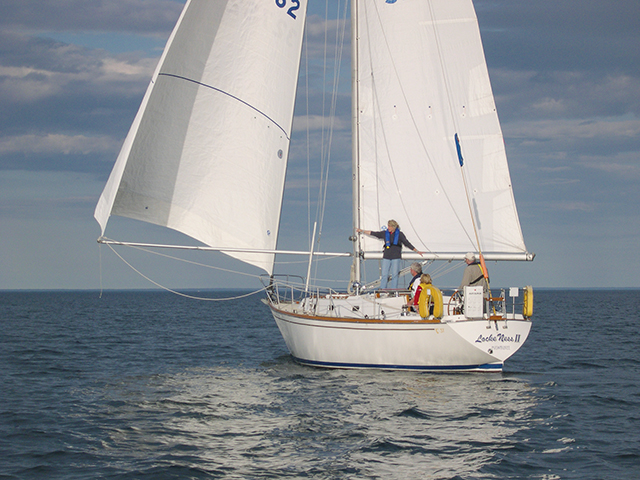For downwind sailing, spinnaker poles, whisker poles and sprits enhance sailing fun and performance (published June 2013)
Downwind sailing is the course of choice for most cruisers and to enjoy this favored angle you really need downwind sails and the right poles for setting those sails. Your genoa is the basic downwind sail and by running wing and wing, you can really make miles with the wind dead astern.
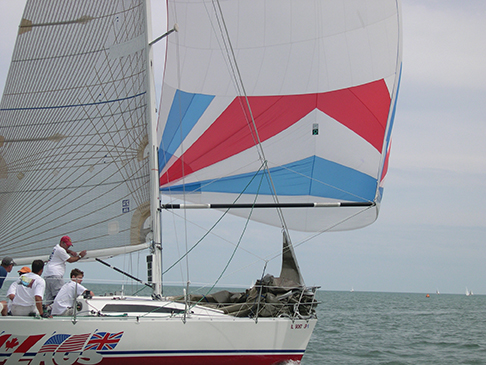 If you think sailing wing and wing is hard, then you probably haven’t rigged the genoa on a spinnaker pole or whisker pole. With the pole attached at the mast and to the genoa sheet at the clew, the sail can be set on the opposite side from the mainsail and held in place. Cruisers crossing oceans will often sail wing-and-wing for days and weeks on end.
If you think sailing wing and wing is hard, then you probably haven’t rigged the genoa on a spinnaker pole or whisker pole. With the pole attached at the mast and to the genoa sheet at the clew, the sail can be set on the opposite side from the mainsail and held in place. Cruisers crossing oceans will often sail wing-and-wing for days and weeks on end.
For the most secure and easy-to-use setup, rig a topping lift for the pole on your mast and foreguys that run from the pole, through blocks at the bow and aft to the cockpit so they can be trimmed easily as you reef the “wung out” genoa in a rising breeze. Some skippers also rig after guys so the pole is controlled in three dimensions and completely secure.
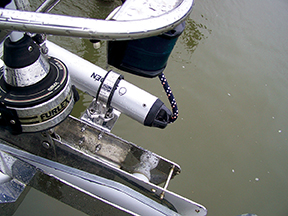 Telescoping poles work well on cruising boats because they are easy to stow and can be adjusted to the exact length required by the size of the genoa. To cut down on weight, companies like Forespar and Selden are building telescoping poles that have aluminum tubes inboard and a carbon tube that extends outboard.
Telescoping poles work well on cruising boats because they are easy to stow and can be adjusted to the exact length required by the size of the genoa. To cut down on weight, companies like Forespar and Selden are building telescoping poles that have aluminum tubes inboard and a carbon tube that extends outboard.
Carbon fiber spinnaker poles, like those from Selden, Forespar, Hall Spars and others, add a lot to a cruising boat because they are so light that any crewmember can handle them. When you are jibing the genoa downwind, you have to move the pole to the new windward side so lightness and ease of handling are important. Heavy aluminum poles, particularly on boats over 45 feet or so, can be awkward and hard to handle and can cause deck damage as you hump them from side to side.
With a well set up spinnaker pole, you can fly a traditional symmetrical spinnaker, in a spinnaker sock, with ease. And, there is nothing like running fast and true under a well set chute. You are making miles and having fun.
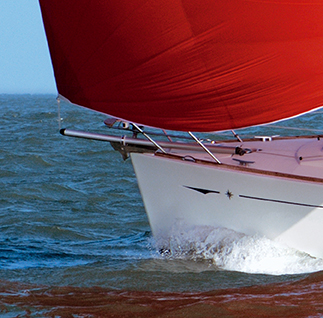 In recent years, asymmetrical downwind sails have become the rage since they are easy to deploy, easy to trim and easy to douse, again with a spinnaker sock or the new top-down furling systems.
In recent years, asymmetrical downwind sails have become the rage since they are easy to deploy, easy to trim and easy to douse, again with a spinnaker sock or the new top-down furling systems.
To get the best from your asymmetrical chute, it is best to tack the sail down to a bow sprit that is deployed from the bow. Sprit boats like J/Boats have their sprits built into the hull. But, most other boats will require some kind of mountable and demountable sprit that integrates with the boat’s bow rollers.
Forespar came out with the Banana Sprit several years ago that fit neatly into an anchor roller and had a short bobstay that ran to a secure pad eye halfway down the bow. It was a good idea and the sprits are still available from the company although they have not continued the line.
Selden has a neat bow sprit solution that has become very popular with cruisers. Using either a short carbon or aluminum pole, the system anchors the aft end of the pole in a snap fitting mounted on the foredeck. The pole then runs through an eye mounted on the bow roller that holds it in place. The sprit tubes and fitting are robust enough so no bob stay is required on most boats. (Check with your rigger for boats over 45 feet or so).
At the outboard end of the sprit, the sail attaches to a short pennant or downhaul that can be adjusted to control luff tension. If you are flying a code zero or an asymmetrical sail on a top-down furler, you can hoist the sail before heading out sailing and leave it rolled up until you are running off, essentially creating a useful double-headsail rig. At the end of the day, you simply lower the rolled up sail, bag it and stow it and then unsnap the sprit and stow it away as well.
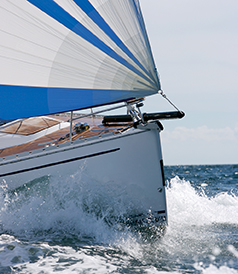 Whisker and spinnaker poles and demountable bow sprits are the way to have fun with downwind sails and they will make sailing easier, faster and more fun.
Whisker and spinnaker poles and demountable bow sprits are the way to have fun with downwind sails and they will make sailing easier, faster and more fun.

















